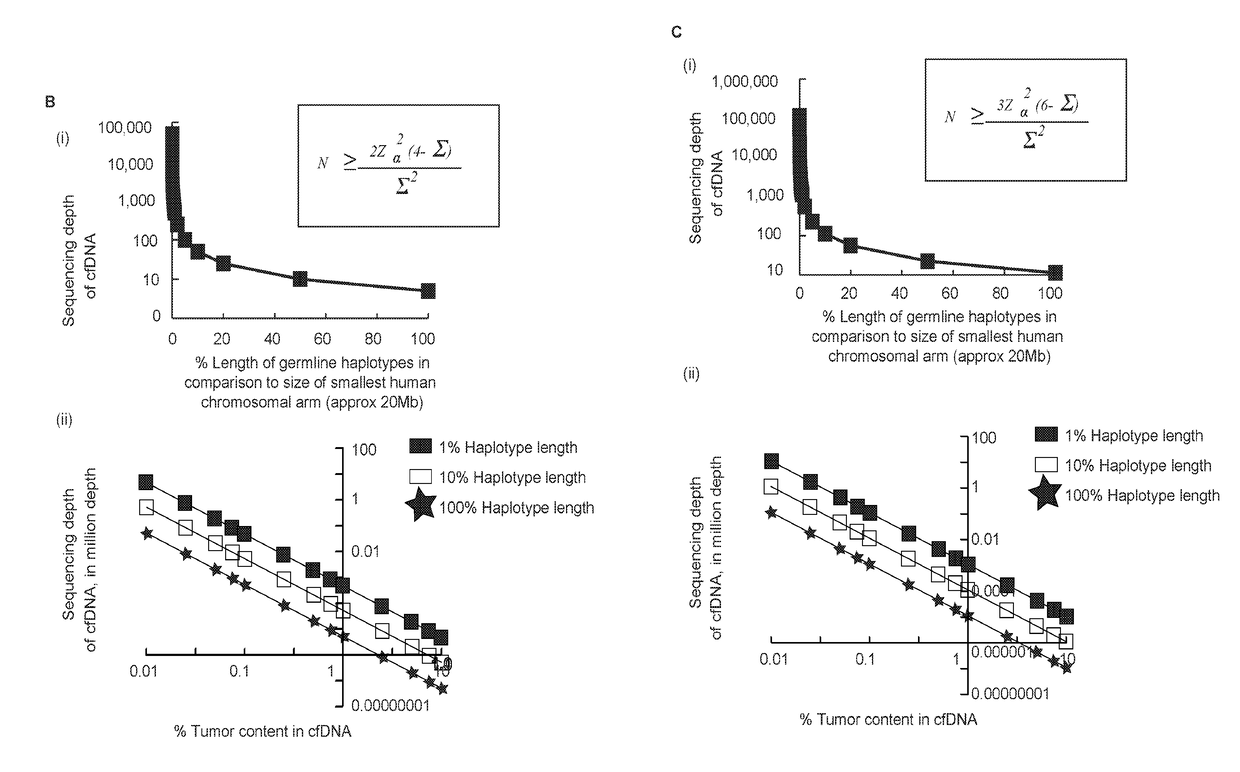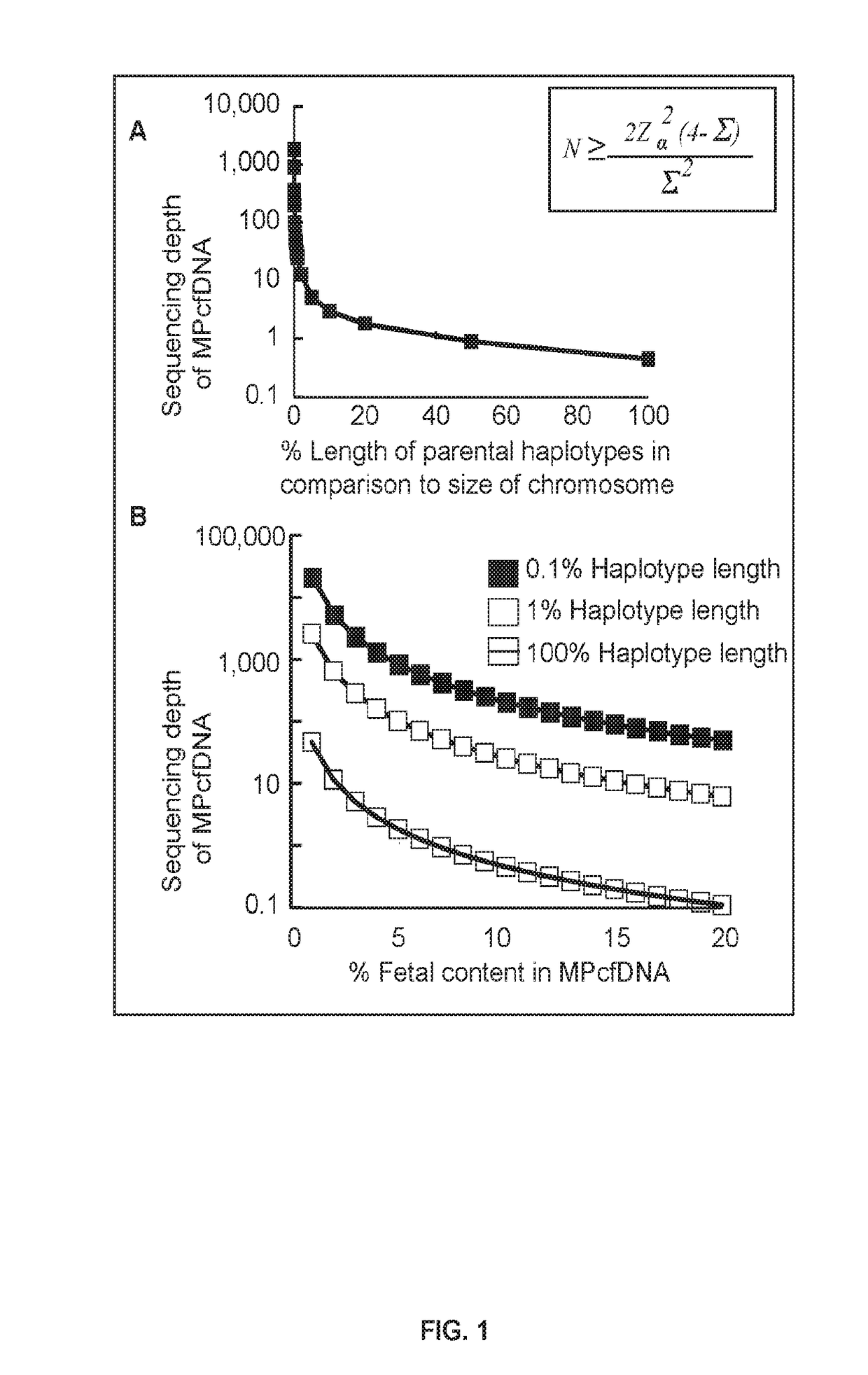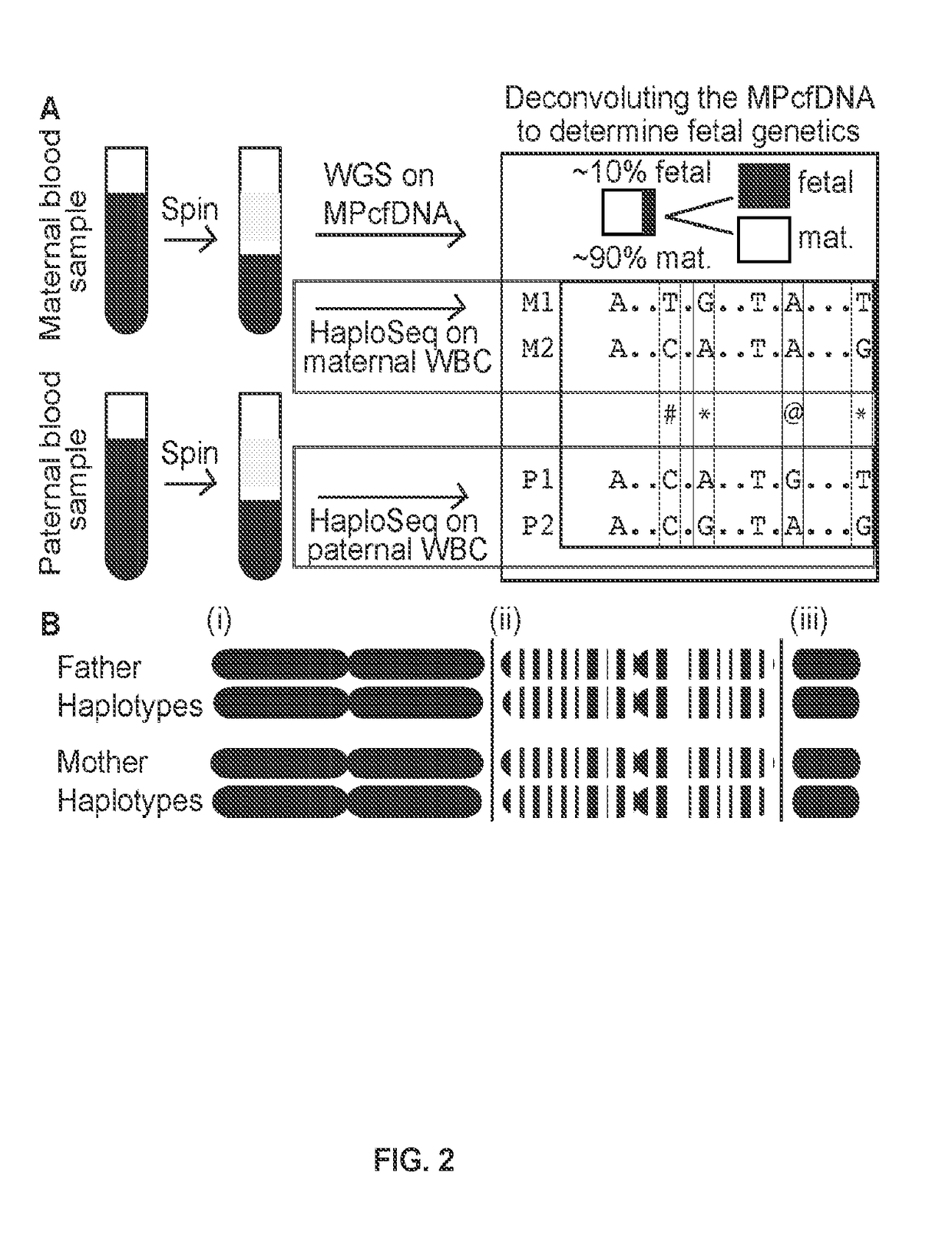Accurate molecular deconvolution of mixture samples
a technology of molecular deconvolution and mixture samples, applied in the field of accurate molecular can solve problems such as extreme challenges, and achieve the effects of reducing the variance of observed allele fractions, accurate deconvolution of mixture samples, and minimizing the sequencing of mixture samples
- Summary
- Abstract
- Description
- Claims
- Application Information
AI Technical Summary
Benefits of technology
Problems solved by technology
Method used
Image
Examples
example 1
Impact of Maximal Enumeration via HaploSeq in the Context of NIPT
[0106]The methods described herein fully utilize HaploSeq-based chromosome-spanning parental haplotypes via long-range and maximal enumeration, therefore, facilitating minimal and low-depth MPcfDNA sequencing. This innovative approach supports the theoretical limit estimations shown in FIG. 1A, that long parental haplotypes drastically reduce the required sequencing depth of MPcfDNA for the determination of a fetal genome (FIG. 2B (i)). Further, the feasibility of chromosome-spanning -ome (e.g. exome) parental haplotypes via HaploSeq means a fetal -ome (e.g. exome) can be determined from -ome targeted sequencing of MPcfDNA (FIG. 2B (ii))—the key is -ome elements are distributed across the entire chromosome and thus, chromosome-spanning haplotypes of parental -omes enables maximal enumeration and minimal MPcfDNA -ome sequencing. In addition, any targeted fetal locus can be determined with the knowledge of parental haplo...
example 2
A HMM with Enumerated Input from Low-Depth Sequencing of MPcfDNA Accurately Determines a Fetal Sequence
[0109]With the enumerated allele fractions as observed values, one aspect of the disclosure is the use of a HMM algorithm that assumes that the hidden haplotype state of the fetus (2-states: M1, M2) truly emits the enumerated observations of allele fractions via a binomial distribution in MHet-PeqMT alleles. A 2-state binomial HMM model determined fetal genetic content with >98% of accuracy (FIG. 4A) with 5 Mb enumeration, at 2× mock-MPcfDNA sequencing. This is remarkable as the method achieved an accuracy equivalent to other methods that used >40× MPcfDNA sequencing, but at 2× MPcfDNA sequencing, therefore reducing the sequencing cost by over 20-fold. While a binomial-HMM algorithm is a natural choice, as it directly models the probability of hidden state emitting the enumerated observation via a binomial expectation (p(success)=0.575 in the example), it could be deficient in hand...
example 3
Optimizing of Enumeration Window Size
[0110]An important feature of the disclosure is the correct parental haplotype enumeration block window. A 5 Mb sliding window provides a robust input for the 2-state Gaussian HMM to predict the fetal genotype and haplotypes with >99% accuracy in our mock-MPcfDNA data at MHet-PeqMT alleles sequenced at 2× (FIG. 4A). A longer enumeration window size could enable a more powerful cumulative input to the HMM, but the probability of recombination in that window is also higher. At the same time, shorter window sizes may not have enough data points to result in a powerful HMM input. Therefore, to resolve such a trade-off, multiple window sizes were analyzed in order to leverage the best possible HMM input to obtain the highest accuracy of fetal sequence inferences. Our analyses of MHet-PeqMT alleles revealed that enumerating over ˜2 Mb window sizes, both upstream and downstream, of every MHet-PeqMT allele generates the best accuracy (˜99.5%) for chromos...
PUM
| Property | Measurement | Unit |
|---|---|---|
| total length | aaaaa | aaaaa |
| size | aaaaa | aaaaa |
| sequencing depth | aaaaa | aaaaa |
Abstract
Description
Claims
Application Information
 Login to View More
Login to View More - R&D
- Intellectual Property
- Life Sciences
- Materials
- Tech Scout
- Unparalleled Data Quality
- Higher Quality Content
- 60% Fewer Hallucinations
Browse by: Latest US Patents, China's latest patents, Technical Efficacy Thesaurus, Application Domain, Technology Topic, Popular Technical Reports.
© 2025 PatSnap. All rights reserved.Legal|Privacy policy|Modern Slavery Act Transparency Statement|Sitemap|About US| Contact US: help@patsnap.com



